The massive circular park is meant to protect the environment by controlling the continuous urbanization of the area around one of Colombia’s largest cities.
By Eduardo Leal
View of the city of Medellín, Colombia, from El Faro. El Faro is one of the many neighborhoods in Medellín that is changing as a result of the Green Belt. (Photo: Eduardo Leal)
Worldwide, climate change is already causing unpredictable weather patterns such as longer droughts and heavier rains. In Medellín, the second largest city in Colombia, these changes are affecting much of the population.
Thousands of the city’s residents live in haphazardly constructed settlements on the valley walls that surround the city. Many of those people fled to Medellín after being displaced by the guerrilla violence that plagued Colombia for decades. The areas in which they settled are considered to be at a high risk for landslides, due to the combination of soft, unstable soil and heavy rainfall.
In 2011, Medellín officials announced the construction of a massive 72-kilometer-long park, the Jardín Circular (or “circular park”, also referred to as the Green Belt), along the mountainous outer rim of the city.
The Green Belt has many goals. First, it is meant to protect the environment by controlling the continuous urbanization of the area around the city. The outer zones of the park will aim to create harmony between nature and the city, in part by planting over 76,000 endemic trees and creating a habitat for native birds and animals.
At the same time, city officials hope that it will create better living conditions for the people that currently live along the valley walls. New access routes are being created in the form of pathways, bicycle routes, and new cable car lines. Simultaneously, the construction of the Green Belt creates employment opportunities in those communities, and 80 percent of the people working on the project are from the settlements. Since most of the population came from rural areas, urban gardens have been created to help feed the local people and to make some extra income by selling the excesses of production in the city markets.
Completing the Green Belt will not be easy. The cost of the park is an estimated $250 million, and, at some point, the construction will require the relocation of many of the houses in vulnerable areas. So far, few details have been offered about how that relocation will take place, how many people will be affected, or where those residents will go.
Still, a project that was initially viewed with suspicion and fear is now a source of pride for many Colombians, especially after the Jardín Circular won a Green World Award in 2015 for best environmental practices.

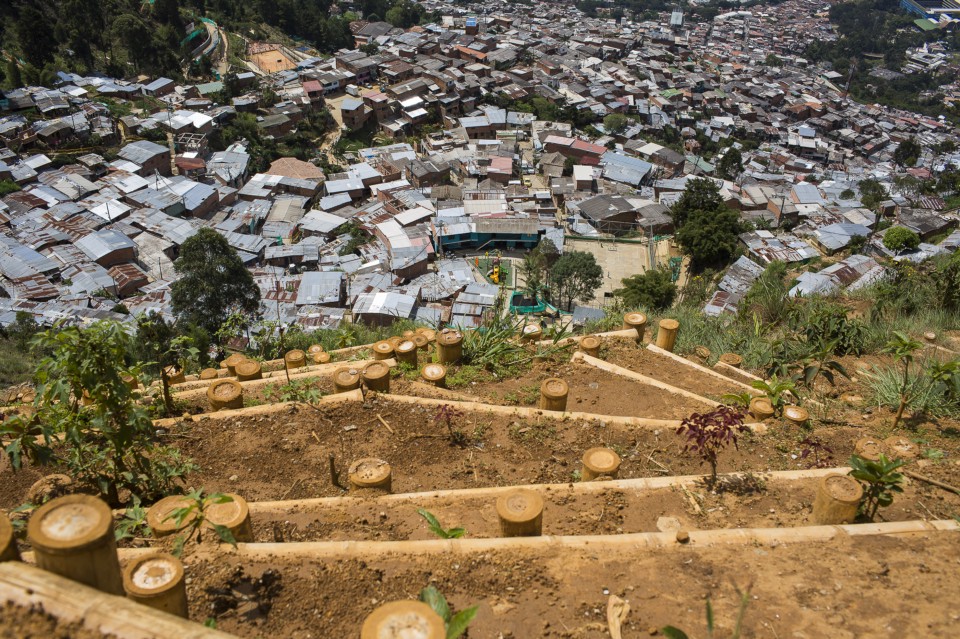
Left: Workers for the municipality of Medellín work on the Green Belt in barrio El Faro, while a local man passes by with his horses. Eighty percent of the workforce used in the construction of the Green Belt live in the areas where it is being constructed. (Photo: Eduardo Leal) | Right: Terraces are built along the Green Belt in barrio Alto de la Torre. The terraces are meant to increase the stability of the valley walls and act as a barrier against landslides. (Photo: Eduardo Leal)
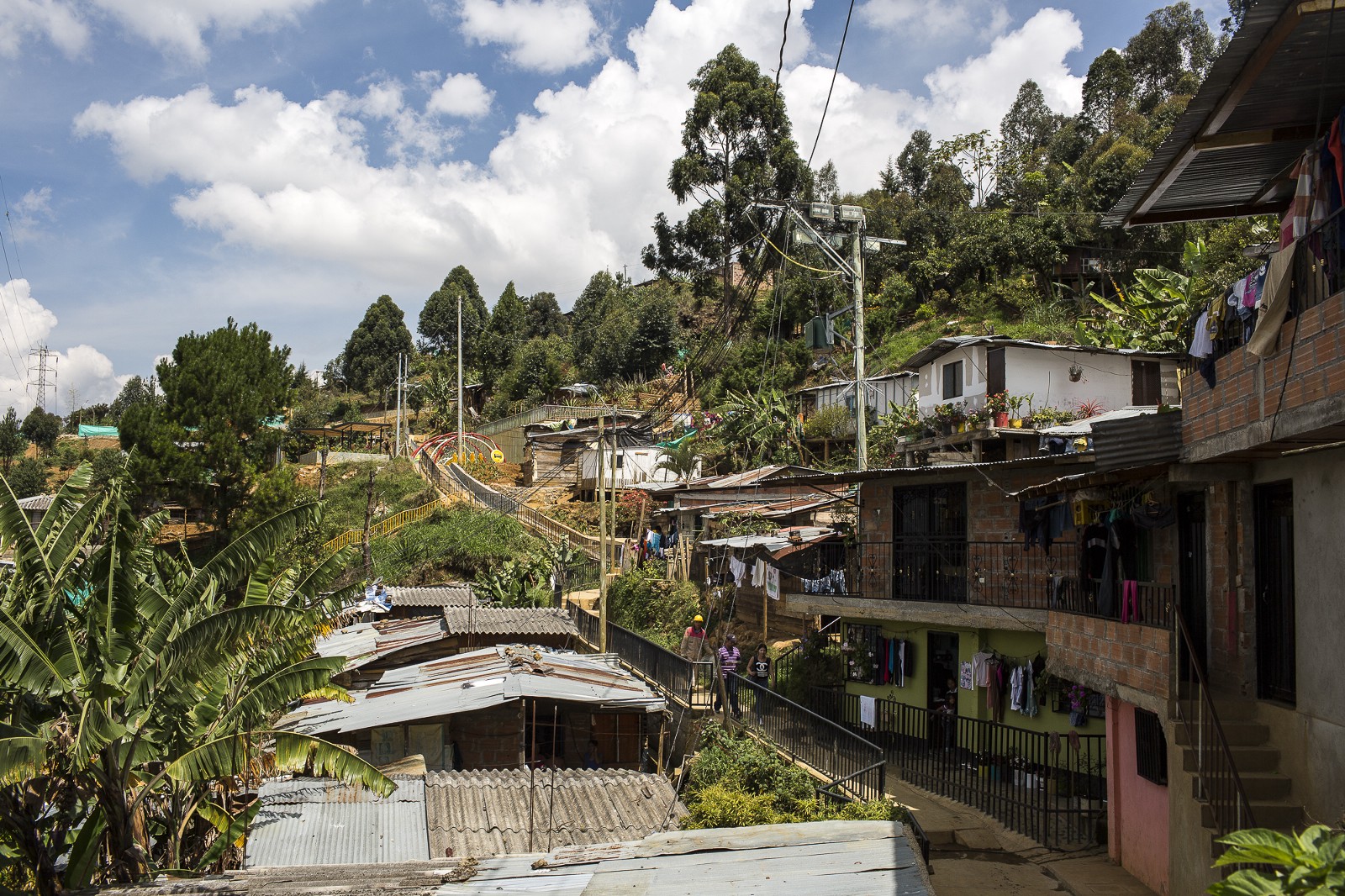
One of the many paths that are part of the green belt crosses through Alto de la Torre. (Photo: Eduardo Leal)
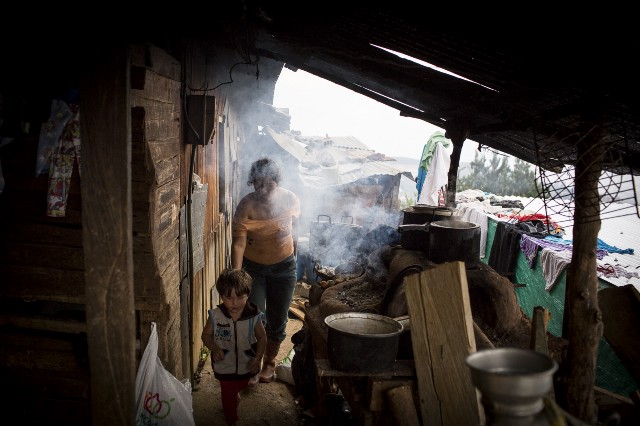
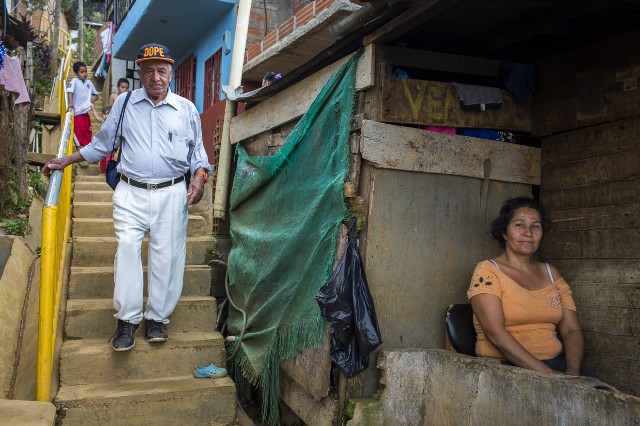
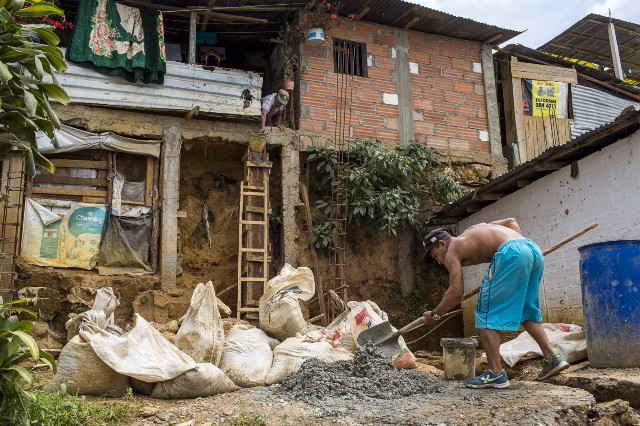
Left: Blanka Cerna with her son on the makeshift kitchen of her house in El Faro. Many locals have retained rural traditions even after moving to the city. (Photo: Eduardo Leal) | Middle: Blanka Cerna sits outside her house while a neighbor walks down the stairs that connect the different paths of the Green Belt. Cerna says that, previously, the paths were made of mud; when the rainy season arrived it was extremely difficult to move around. (Photo: Eduardo Leal) | Right: A father and son work to reinforce the foundation of their house in El Faro. The house is built on the valley wall outside of Medellín, in an area at a high risk of collapse during heavy rains. (Photo: Eduardo Leal)

An evacuation sign in case of landslides in an area where the Green Belt is being built in El Faro. (Photo: Eduardo Leal)
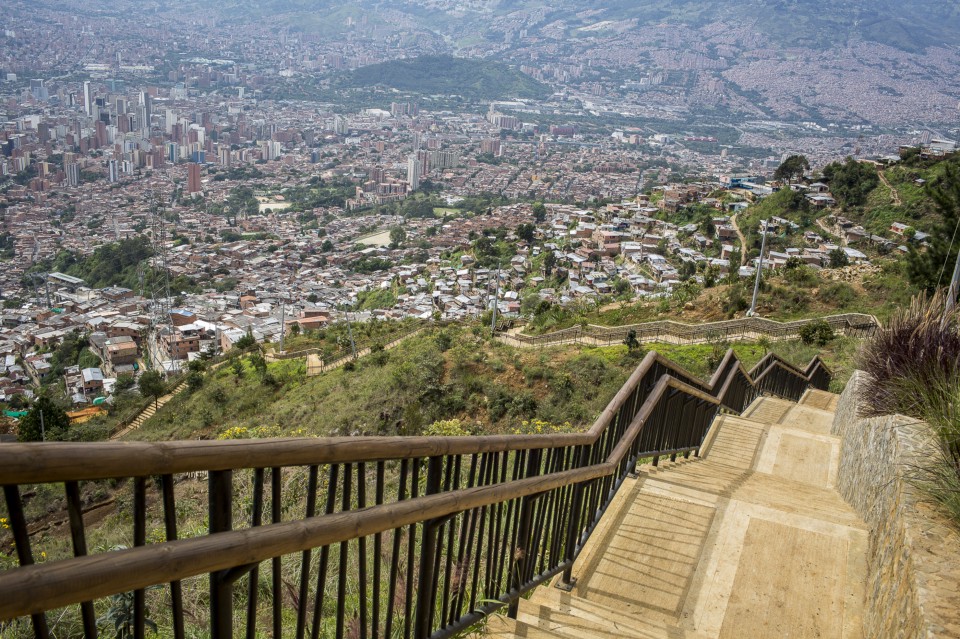
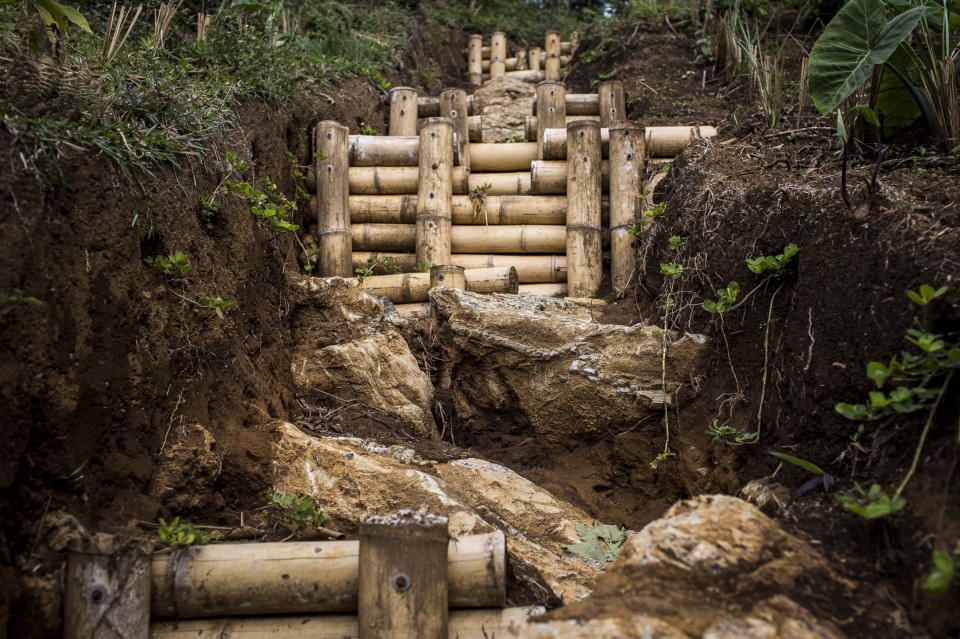
Left: One of the many paths that are part of the Green Belt in Alto de la Torre, with the city of Medellín below. (Photo: Eduardo Leal) | Small dams are built along water canals to control rain water and to help prevent landslides in Alto de la Torre. (Photo: Eduardo Leal)
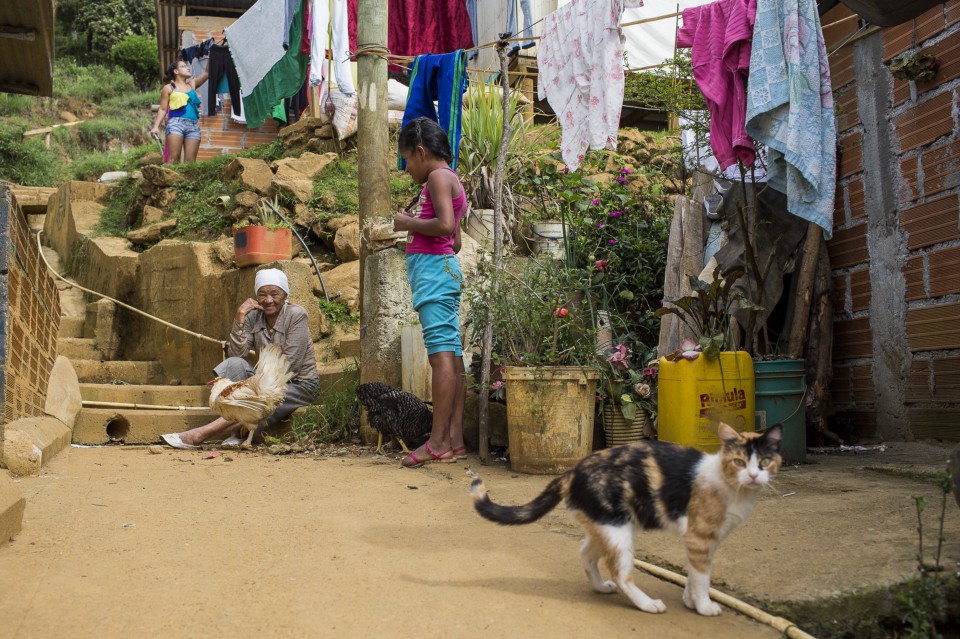
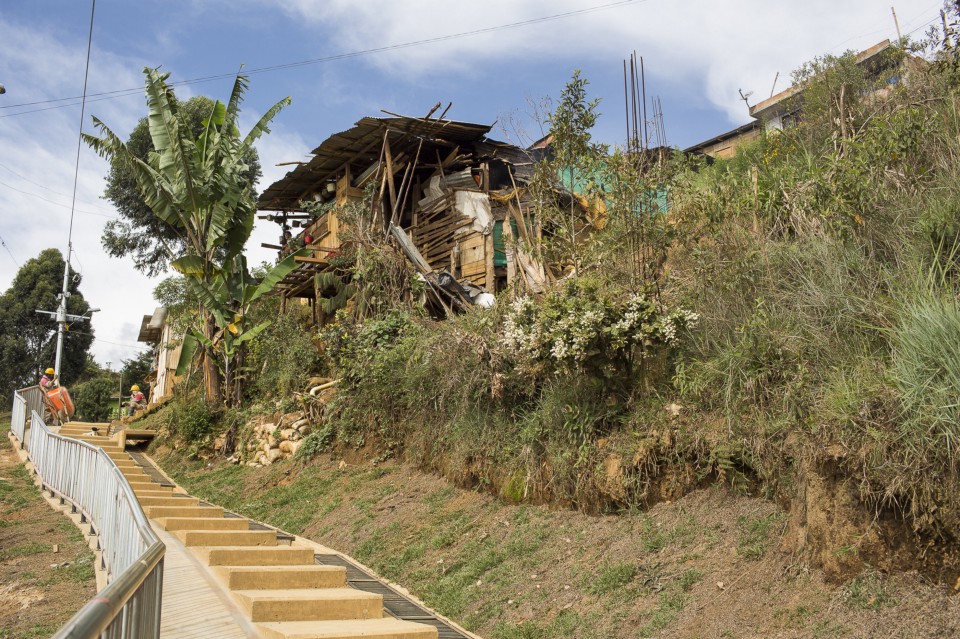
Left: Ana Rosa, 89, sitting outside her house in the company of her chickens and granddaughter in Alto de la Torre. She says that she is happy for the construction of the Green Belt since it has improved the quality of her neighborhood and given employment opportunities to her neighbors. (Photo: Eduardo Leal) | Right: One of the many paths that are part of the Green Belt in El Faro. (Photo: Eduardo Leal)
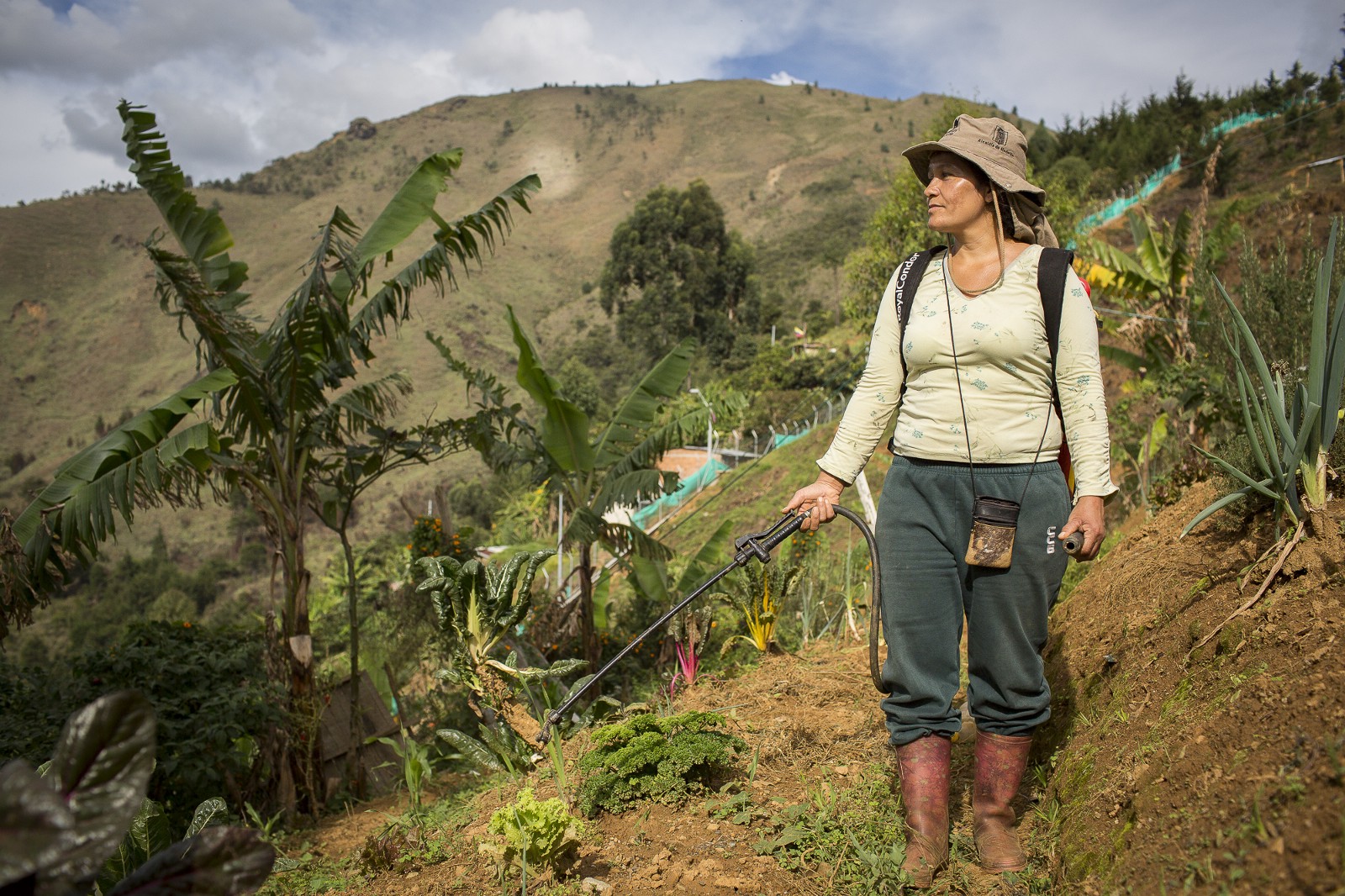
Blanka Cerna waters the plants in a communal garden in El Faro. These gardens create opportunities for women to feed their families and sell the excess in local markets for extra income. (Photo: Eduardo Leal)
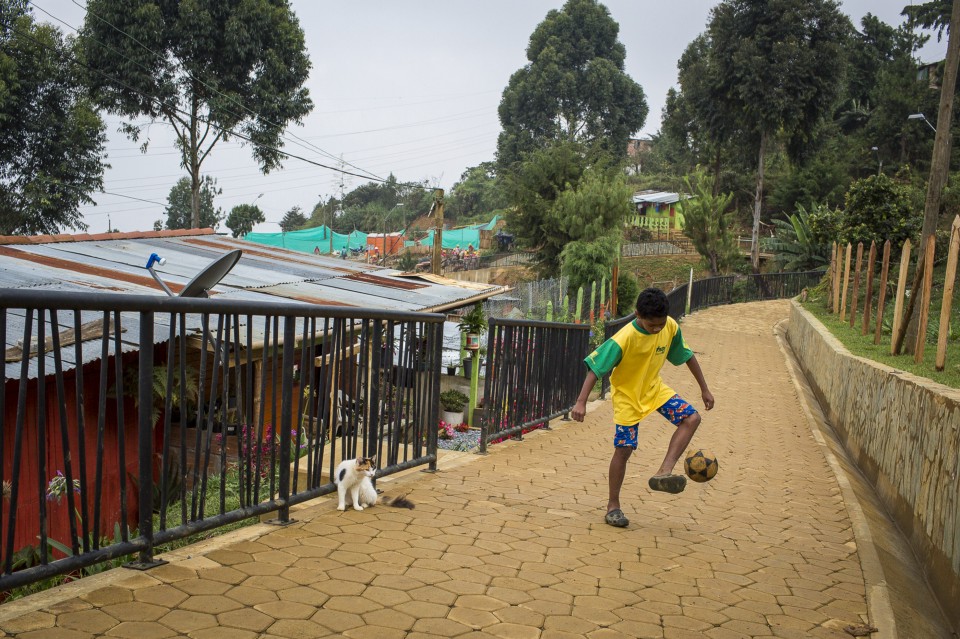
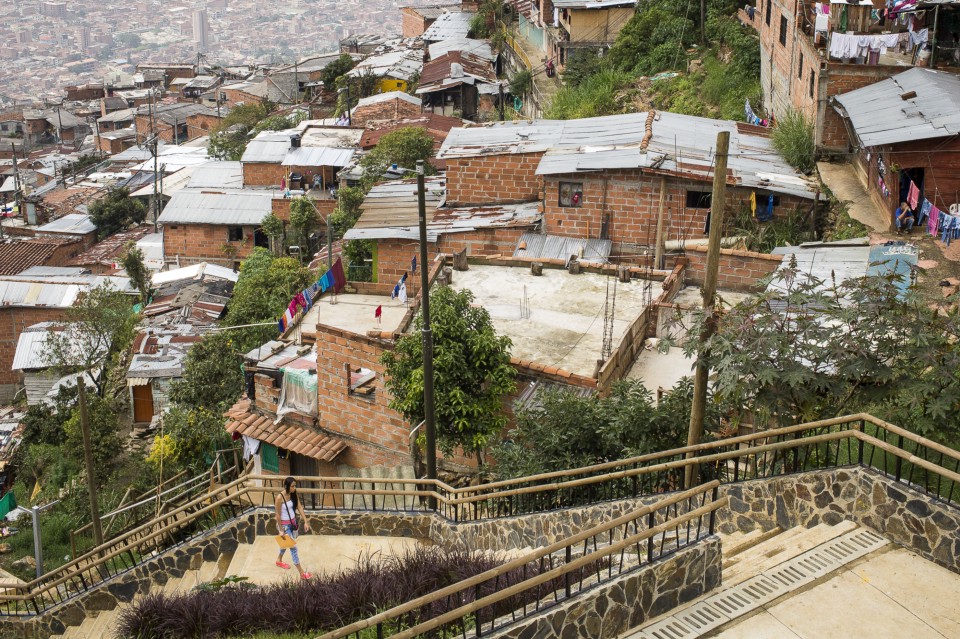
Left: A boy plays football on a path of the Green Belt that passes in front of his house in El Faro. (Photo: Eduardo Leal) | Right: A girl walks up one of the many staircases that are part of the Green Belt. (Photo: Eduardo Leal)

||
The Conservation in the Age of Climate Change Project is an effort to explore how conservation organizations around the world are responding to rising seas, droughts, extreme weather events, and other threats posed by global warming.





